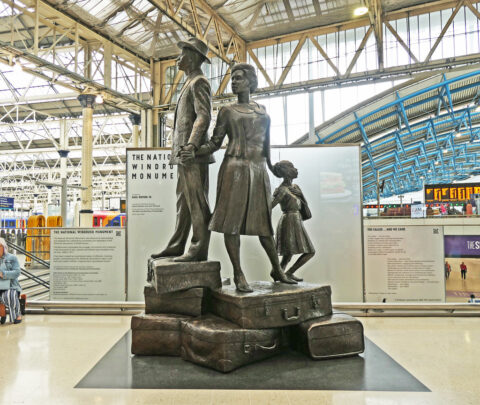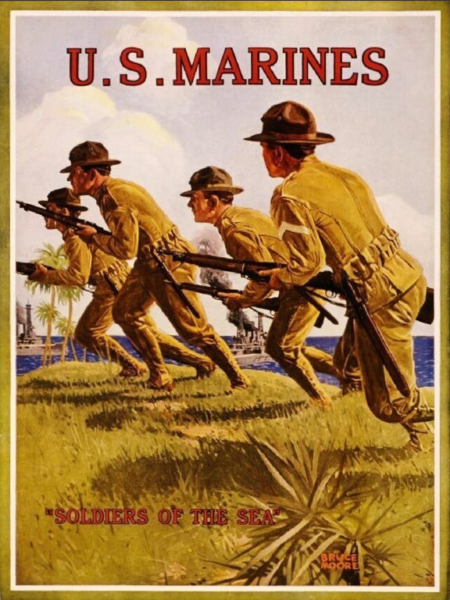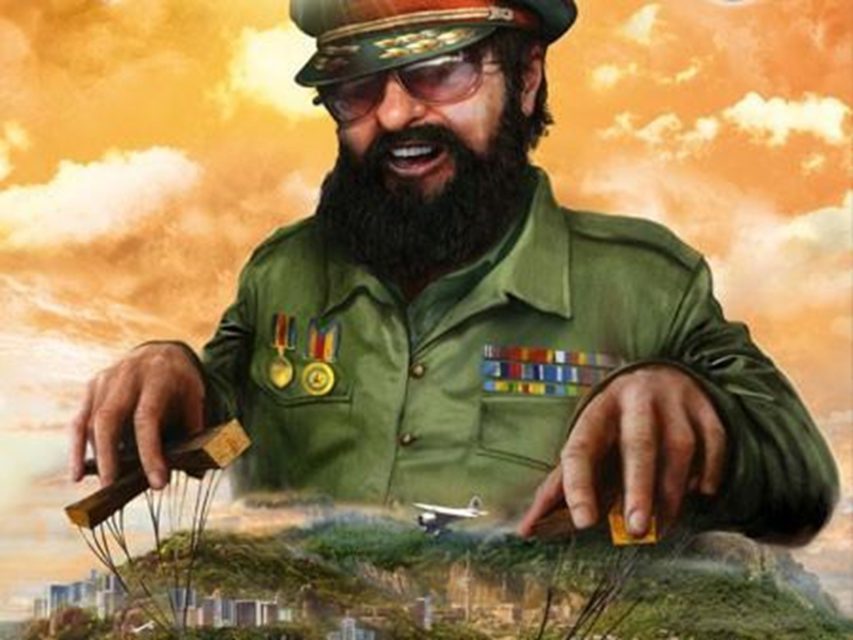I used chicken because I was tired of looking unsuccessfully for goat. You can get goat if you go where people from the islands live, but that would be a lot like work.
You roll the roti up and eat the curry like a bear eating a Cub Scout in a sleeping bag.
Steve H., “Roti Stuffed With Curry: Green and Mean”, Hog on Ice, 2005-01-01.
February 23, 2024
QotD: Eating roti
June 24, 2023
Official mythmaking about the Empire Windrush in 1948
The Armchair General unpacks some of the story-spinning being conducted by the British government and various charities to mark the 75th anniversary of the voyage of the Empire Windrush from Jamaica to Britain:

“The National Windrush Monument” by amandabhslater is licensed under CC BY-SA 2.0 .
The Armchair General notes that there is much excitement about the 75th anniversary of the arrival of the ship called the Empire Windrush — which arrived on 22 June 1948 — and the contribution of the so-called Windrush Generation.
The myth currently being constructed is that those coming from Jamaica on the ship were invited, in order to rebuild a Britain struggling to recover from Word War II; we are told that, with so many young men killed in the fighting, Britain needed menial workers to selflessly come and rebuild our economy. Indeed, this view of events has been cemented in a much-lauded poem by Professor Laura Serrant.
Remember … you called.
Remember … you called
YOU. Called.
Remember, it was us, who came.Like almost any story constructed by governments and charities over at least the last thirty years, this narrative is dodgy at best and downright dishonest at worst. The simple fact is that the ship’s operator had expected to leave Jamaica under capacity and so offered passage at half price: many local men (and it was all men) took the opportunity.
Writing in The Spectator, in an article well worth reading in full, Ed West points out that the British government certainly did not encourage these immigrants at all.
Far from calling them, the British government was alarmed by the news. A Privy Council memo sent to the Colonial Office on 15 June stated that the government should not help the migrants: “Otherwise there might be a real danger that successful efforts to secure adequate conditions of these men on arrival might actually encourage a further influx.”
Colonial Secretary Arthur Creech Jones replied: “These people have British passports and they must be allowed to land.” But, he added confidently: “They won’t last one winter in England.” Indeed, Britain had recently endured some very harsh winters.
The Ministry of Labour was also unhappy about the arrival of the Jamaican men, minister George Isaacs warning that if they attempted to find work in areas of serious unemployment “there will be trouble eventually”. He said: “The arrival of these substantial numbers of men under no organised arrangement is bound to result in considerable difficulty and disappointment. I hope no encouragement will be given to others to follow their example.”
Nor was it the solely the evil Tories who were concerned:
Soon afterwards, 11 concerned Labour MPs wrote to Prime Minister Clement Attlee stating that the government should “by legislation if necessary, control immigration in the political, social, economic and fiscal interests of our people … In our opinion such legislation or administration action would be almost universally approved by our people.” The letter was sent on 22 June; that same day the Windrush arrived at Tilbury.
One can hardly be surprised: after all, 75 years ago, the Labour Party at least strove to represent the working class of Britain and the simple fact is that there was, at the time, massive unemployment — so much so that the government was heavily subsidising tickets to Australia (at £10) in order to encourage British people to emigrate (over 2 million British people left between 1948 and 1960).
There is a certain amount of well-intentioned inclusive myth-making in this story, and from a historical point of view the idea that “diversity built Britain”, the birthplace of the Industrial Revolution, is bizarre. Until 1952 Britain was the richest country in Europe, after which we massively fell behind our continental rivals – so if diversity did “build” the country, it didn’t do a great job.
One can argue, I think, that the Windrush Generation made a great many contributions, in common with many immigrants; and if their contribution was not, in reality, as large as is claimed, then they share that with the EEC/EU’s Common Market which, again (and despite all the claims), brought no discernible benefit to the UK.
H/T to Tim Worstall for the link.
April 19, 2023
The USMC finds a new mission after WW1
Another excerpt from John Sayen’s Battalion: An Organizational Study of United States Infantry (unpublished, but serialized on Bruce Gudmundsson’s Tactical Notebook:
The 1919 demobilization was nearly as traumatic for the Marines as it was for the Army. Their numbers fell from a peak of 75,000 to about 1,000 officers and 16,000 enlisted in 1920. Authorized strength was 17,400. The 15 Marine regiments and at least three, probably four, machinegun battalions existing at the end of November 1918 had withered away to only five regiments and a couple of separate battalions (one artillery and one infantry) by the following August.
Marine commitments, however, remained heavy. The brigades in both Haiti and the Dominican Republic had their hands full suppressing new rebellions. Guard detachments were still needed for Navy bases and Navy ships. The number of men required for the latter duty had fallen by only 10% since 1918. The Marines also had to staff their own bases at Quantico, Parris Island, and San Diego and they had to find men to rebuild the advance base force as well. When these facts were brought to the attention of Congress in 1920 the latter increased the Marine Corps’ authorized strength to 1,093 officers and 27,400 enlisted but then approved funding for only 20,000.
[…]
The bulk of the Corps’ operating forces were still engaged in colonial police work in the Caribbean. However, the new Commandant, Major General John A. Lejeune, was prescient enough to realize that this would not last and that a much more permanent mission would be needed to secure his service’s future. Instead, Lejeune and his advisors concluded that the real mission of the Marine Corps was “readiness”. While this concept might seem trite, one should consider that the United States was and is primarily an insular power. Its standing army in 1920 served primarily as a garrison force and cadre for a much larger wartime citizen army. Little or none of it would be available for immediate use upon the outbreak of a major war beyond the troops already deployed to major US overseas possessions like the Philippines, Hawaii, or the Panama Canal.
Although the Army of 1920 seemed to have little idea about who its future adversaries were likely to be, the Navy had already fingered Japan as its most likely future opponent. Japan had the most powerful navy after the United States and Great Britain and Japanese-American animosity was growing. The Japanese resented the treatment of Japanese immigrants in California. Americans resented Japan’s high handed actions in China. The Japanese saw American criticism of Japan’s China policy as interference in Japan’s rightful sphere of influence. Any war fought against Japan would be primarily naval in character. However, post war disarmament treaties forbade improvements to any American fortresses west of Hawaii. The League of Nations had also mandated most of the central Pacific islands to Japanese control.
If it was to successfully engage the Japanese fleet, or to threaten Japan itself, the United States Navy would need bases in those central Pacific islands. Hawaii was too far away to be useful and the Philippines were too vulnerable to Japanese attack. Only an expeditionary force could seize and hold the central Pacific islands that the Navy needed and that expeditionary force would have to be ready to move whenever and wherever the Navy did. By staying “ready”, requiring only limited reserve augmentation and, being already under the Navy’s control, the Marine Corps would be much better positioned than the Army to provide this expeditionary force, at least during the critical early stages of the next war.*
* Heinl op cit pp. 253-254; Moskin op cit pp. 219-222; and Clifford op cit pp. 25-29 and 61-64.
April 10, 2023
US Army and Marine Corps deployments other than with the American Expeditionary Forces (AEF)
Another excerpt from John Sayen’s Battalion: An Organizational Study of United States Infantry currently being serialized on Bruce Gudmundsson’s Tactical Notebook shows where US infantry units (US Army and USMC) were deployed aside from those assigned to Pershing’s AEF on the Western Front in France:
Apart from the war in Europe, the principal military concern of the Wilson administration during 1917-18 was the protection of resources and installations considered vital to the war effort. The threat of German sabotage in the United States was taken very seriously. In addition, Mexico was still unstable politically and sporadic border clashes continued to occur into 1919. Mexican oil was also regarded as an essential resource and the troops stationed on the Mexican border were prepared to invade in order to keep it flowing. However, all the National Guard, National Army, and even the Regular Army regiments raised for wartime only were reserved for duty with the AEF. (The National Army 332nd and 339th Regiments did deploy to Italy and North Russia, respectively, but both remained under AEF command.) This left non-AEF assignments in the hands of the pre-war Regular Army regiments.
Out of 38 Regular infantry regiments available in 1917, 25 were on guard duty within the Continental United States or on the Mexican border and 13 garrisoned U.S. possessions overseas. Local defense forces raised in Hawaii and the Philippines eventually freed the pre-war regiments stationed in those places for duty elsewhere. By the end of the war the 15th Infantry in China, the 33rd and 65th (Puerto Rican) Infantry in the Canal Zone, and the 27th and 31st Infantry (both under the AEF tables) in Siberia were the only non-AEF regiments still overseas. Inside the United States state militia (non-National Guard) units and 48 newly raised battalions of “United States Guards” (recruited from men physically disqualified for overseas service) had freed 20 regiments from stateside guard duties, but not in time for any of them to fight in France.
Only twelve pre-war regiments actually saw combat in the AEF. Nine of them served with the early-arriving 1st, 2nd, and 3rd AEF Divisions. The other three were with the late arriving 5th and 7th Divisions. One more reached France with the 8th Division, but only days ahead of the Armistice. By this time, the Regular Army regiments had long ago been stripped of most of their pre-war men to provide cadre for new units. They were refilled with so many draftees that their makeup scarcely differed from those of the National Army.*
The situation with the Marines was similar to that of the Regular Army. Most Marine regiments had to perform security and colonial policing duties that kept them away from the “real” war in France. Also like the Army, the Marines made Herculean efforts to accommodate a flood of recruits, acquiring training bases at Quantico Virginia and Parris Island South Carolina, as their existing facilities became too crowded. The Second Regiment (First Provisional Brigade) continued to police Haiti while the Third and Fourth Regiments (Second Provisional Brigade) did the same for the Dominican Republic. The First Regiment remained at Philadelphia as the core of the Advance Base Force (ABF) but its role soon became little more than that of a caretaker of ABF equipment.
Although there was little danger from the German High Seas Fleet ABF units might still be needed in the Caribbean to help secure the Panama Canal and a few other critical points against potential attacks by German surface raiders or heavily armed “U-cruisers.” Political unrest was endangering both the Cuban sugar crop and Mexican oil. To address such concerns, the Marines raised the Seventh, Eighth, and Ninth Regiments as infantry units in August, October, and November 1917, respectively. The Seventh, with eight companies went to Guantanamo, Cuba, to protect American sugar interests. The Ninth Regiment (nine companies) and the headquarters of the Third Provisional Brigade followed. The Eighth Regiment with 10 companies, meanwhile, went to Fort Crockett near Galveston, Texas to be available to seize the Mexican oil fields with an amphibious landing, should the situation in Mexico get out of hand.
Three other rifle companies (possibly the ones missing from the Seventh and Ninth Regiments) occupied the Virgin Islands against possible raids by German submarines. In August 1918, the Seventh and Ninth Regiments expanded to 10 companies each. The situation in Cuba having subsided, the Marine garrison there was reduced to just the Seventh Regiment. The Ninth Regiment and the Third Brigade headquarters joined the Eighth at Fort Crockett.**
* Order of Battle of the United States Land Forces in the World War op cit pp. 310-314 and 1372-1379. A battalion of United States Guards was allowed 31 officers and 600 men. These units were recruited mainly from draftees physically disqualified for overseas service. The 27th and 31st Infantry when sent to Siberia were configured as AEF regiments, though they were never part of the AEF. Large numbers of men had to be drafted out of the 8th Division to build these two regiments up to AEF strength. This seriously disrupted the 8th Division’s organization.
** Order of Battle of the United States Land Forces in the World War op cit pp. 1372-78; Truman R. Strobridge, A Brief History of the Ninth Marines (Washington DC, Historical Division HQ US Marine Corps; revised version 1967) pp. 1-2; James S. Santelli, A Brief History of the Eighth Marines (Washington DC, Historical Division HQ US Marine Corps; 1976) pp. 1-3; and James S. Santelli, A Brief History of the Seventh Marines (Washington DC, Historical Division HQ US Marine Corps; 1980) pp. 1-5.
February 28, 2021
Japan Destroys Allied Armada in Biggest Naval Battle in Decades – WW2 – 131 – February 27, 1942
World War Two
Published 27 Feb 2021The Japanese are advancing in the Dutch East Indies and Burma, brushing aside defenders, but their biggest victory this week is at sea, when they not only brush aside the ABDA Fleet, but literally wipe it out of existence. Meanwhile Italian and German submarines are patrolling the Caribbean, sinking any Allied merchant shipping they find. It is yet another week of Axis successes.
Join us on Patreon: https://www.patreon.com/TimeGhostHistory
Or join The TimeGhost Army directly at: https://timeghost.tvFollow WW2 day by day on Instagram @ww2_day_by_day – https://www.instagram.com/ww2_day_by_day
Between 2 Wars: https://www.youtube.com/playlist?list…
Source list: http://bit.ly/WW2sourcesWritten and Hosted by: Indy Neidell
Director: Astrid Deinhard
Producers: Astrid Deinhard and Spartacus Olsson
Executive Producers: Astrid Deinhard, Indy Neidell, Spartacus Olsson, Bodo Rittenauer
Creative Producer: Maria Kyhle
Post-Production Director: Wieke Kapteijns
Research by: Indy Neidell
Edited by: Iryna Dulka
Sound design: Marek Kamiński
Map animations: Eastory (https://www.youtube.com/c/eastory)Colorizations by:
– Mikołaj Uchman
– Norman Stewart – https://oldtimesincolor.blogspot.com/Sources:
– National Portrait Gallery
– IWM: H 17365, A_238, CB(OPS) 5008Soundtracks from the Epidemic Sound:
– Rannar Sillard – “Easy Target”
– Howard Harper-Barnes- “Underlying Truth”
– Jo Wandrini – “Dragon King”
– Fabien Tell – “Last Point of Safe Return”
– Wendel Scherer – “Out the Window”
– Reynard Seidel – “Rush of Blood”
– Brightarm Orchestra – “On the Edge of Change”
– Craft Case – “Secret Cargo”
– Phoenix Tail – “At the Front”
– Johan Hynynen – “Dark Beginning”
– Wendel Scherer – “Growing Doubt”Archive by Screenocean/Reuters https://www.screenocean.com.
A TimeGhost chronological documentary produced by OnLion Entertainment GmbH.
January 16, 2019
August 21, 2018
Celebrity chef accused of cultural appropriation
Tim Worstall explains why, despite jerk chicken being something like the national dish of Jamaica, accusing Jamie Oliver of culturally appropriating it makes no sense whatsoever:
Well, here’s a recipe for that jerk chicken which does seem to be close to being the Jamaican national dish.
Ingredients
8 -10 pieces of legs and thighs
1 lemon/lime
Salt and pepper to season
½ tablespoon cinnamon powder
1 sprig of fresh thyme
3 medium scallions (green onions) chopped
1 medium onion coarsely chopped
2-4 habanero pepper chopped
1 1/2 tablespoon Maggi or soy sauce
1 tablespoon bouillon powder optional
3 tablespoons dark brown sugar
6 garlic cloves chopped
1 teaspoon freshly grated nutmeg
1 tablespoon allspice coarsely ground
1 1/2 tablespoon fresh ginger chopped
1 tablespoon coarsely ground pepperAs far as I can tell those ingredients coming from, in order – the chicken, SE Asia via land cultural exchange to Europe and then the Americas by the Portuguese and Spanish. Sure, some evidence of Polynesian delivery but on West Coast only. The lemon, SE Asia, salt everywhere, pepper India or perhaps Indonesia. Cinnamon, SE Asia but introduction to European thus Caribbean cuisines through Ancient Egypt and thus into Greece. Thyme, the Levant and Ancient Egypt, scallions at least as far back as Ashkelon and further east than that. Onions, definitely Eurasian, habaneros definitively Latin American. Soy sauce, think we’ll allow Nippon to claim that, maybe China. Bouillon powder, industrial civilisation somewhere. Sugar, Indian subcontinent, garlic central Asia we think. Nutmeg and allspice the Spice Islands, now Indonesia. Ginger, South and SE Asia.
So, someone who makes this is accusing us of cultural appropriation if we make it?
Oh Aye?
All of which is, of course, to misunderstand the basic point about human beings. We’re apes, ones with a special and remarkable talent. We’ve this readin’ an’ writin’ stuff meaning that when we spot something that works we’re able to tell other people about it. In a manner rather more efficient than just teaching junior to do what we’ve learned to do. This is the secret of our success. That things once learned can be passed onto millions, billions, of other people. If we had to go reinvent the wheel each generation then we’d not all be rolling around in cars now, would we?
The very essence of our being the successful tool using species we are is that we copy. Appropriate that is. So insistences that we don’t “culturally” appropriate are demands that we stop being us, stop being human. Well, you know, good luck with that, however delightful the concept of cultural appropriation is as a method of having something else to shout about.
April 24, 2018
The Windrush scandal in Britain
Brendan O’Neill discusses the bureaucratic idiocy that lead to thousands of people who’d been living and working in Britain are threatened with loss of jobs, loss of healthcare rights, and even deportation:
The Windrush scandal and its fallout might have exposed the incompetence of Theresa May and her political set. But it has done something far worse to Remainers. It has laid to waste their entire worldview. It has shattered their defining myth: that where they brave few are nice and pro-immigrant, the rest of the country, especially those little-educated inhabitants of ‘Brexitland’, are a seething pit of 1930s-style racism. In the palpable public discomfort with how the Windrush migrants have been treated, we see yet again what a libel this Remainer depiction of Brexit Britain has been.
For nearly two years, the liberal intelligentsia has talked about vast swathes of the electorate as a hateful throng whose prime motor is disgust with foreigners. These people yearn for a time when ‘faces were white’, says Vince Cable. The vote for Brexit was a ‘whitelash’, said Guardian columnist Polly Toynbee, which was quite the slur against the one in three ethnic-minority voters who chose Brexit. These mad voters just want ‘less foreign-looking people on their streets’, said Diane Abbott. The police churned out ridiculous hate-crime stats, using entirely subjective criteria to declare there had been an outpouring of violent hate after the referendum, and columnists lapped it up. Brexit Britain was divided between an enlightened elite that doesn’t care about skin colour or national origins and the fever-minded masses who apparently think about little else.
It was a lie, of course, as many of us argued, and as many more should now see in the wake of the Windrush scandal. With every revelation of the Home Office’s mistreatment of Caribbean migrants, public displeasure grows. People can see the grave injustice of treating as criminals people who have been here since the 1940s and 50s and who were given leave to remain by an act of law in 1971. The way these Britons have been thrown out of their jobs or deprived of NHS care or in some cases deported — because rules introduced when Theresa May was home secretary stipulate that all migrants must now have official documentation — has grated with the populace. This was reflected in a poll published by iMix and the Runnymede Trust last week, which found that 60 per cent of Britons, rising to 71 per cent for over-65s, are opposed to what the government has done to the Windrush people. Those same over-65s who for the past two years have been talked about as racist scum by the Remainer chattering classes.
The Remainer elites’ religious conviction that huge parts of Britain are little more than racist-mobs-in-waiting is falling apart, fast. Even before the public concern with the mistreatment of the Windrush generations, there was the survey carried out by Open Europe at the end of last year which challenged the idea that the vote for Brexit was a ‘mandate to pull up the drawbridge’. On the contrary, many Britons still see the value in migration — they simply want some say over it, they want it to be a democratic concern. Open Europe found ‘little evidence’ that this ‘desire to control immigration’ was driven by ‘racism or xenophobia’. Even the EU now accepts Britons are not horrible racists. Its attitudes survey found the proportion of Brits who are ‘very positive’ or ‘fairly positive’ about migrants rose from 43 per cent to 63 per cent over the past four years, which includes the post-Brexit period when we were supposedly taking to the streets to bash a foreigner.
March 28, 2017
A long history of US involvement in “regime change”
In the latest Libertarian Enterprise, L. Neil Smith goes over just the “high points” of American interference in the domestic affairs of other nations:
It makes me sick to keep hearing the mostly Democratic assertion that Donald J. Trump is a candidate foisted on us poor, gullible Americans by the Russian government. This is largely a matter of psychological projection by the left, and of mind-boggling hypocrisy. Previous American governments (mostly Democratic) have a long, shameful history of removing foreign leaders they dislike, for one reason or another, and replacing them with more agreeable figures.
It’s hard to know quite where to begin, and absolutely impossible to be exhaustive. General Smedley Darlington Butler (1881- 1940), twice winner of the Congressional Medal of Honor, tells a long, bloody tale in his little book War Is A Racket, in which he demonstrates that the United States Marines were sent on gunboats to various places across our sad, scarred, and war-weary planet — notably to South and Central America — to protect the interests (with rifles and bayonets, if necessary) of corporations like the United Fruit Company. Costa Rica, Honduras, Guatamala have all suffered from this kind of interference. That’s why they’re called “banana republics”.
In 1953, the people of Iran had thrown the Shah off the throne and replaced him with an elected official by the name of Mosaddegh. British and American “intelligence” were alarmed. If the guy was a communist (he was not) he might cut off the supply of oil on which they had become dependent to enforce their will on the world, So they deposed him and set the Shah back on the throne, setting the scene for today’s unholy (and extremely dangerous) mess.
Rafael Leónidas Trujillo Molina was the dictator of the Dominican Republic (which shares the island of Hispaniola with Haiti) for many decades. He was thoroughly brutal and corrupt, but a time came when his government began to break up, threatening the “stability” of the Caribbean region. In 1961. he was assassinated spectacularly by riflemen in ambush. (Oddly, I recall his car body being blown off the frame by a bazooka.) Wikipedia teeters between blaming his dozens of political rivals and the CIA. At the time it happened, everybody I knew (I was growing up in the military — counter insurgency branch) took the latter theory for granted.
And in 1963, in the middle of the War in Vietnam, when a dictator named Diem failed to do America’s bidding, the kindly, humane, genteel, and oh-so-Democratic President John F. Kennedy had him assassinated and replaced.
November 22, 2013
“…you wonder why it took so long for somebody to shoot the swinish bastard”
Colby Cosh makes no friends among the over-60 Kennedy worshipping community:
The myth of Kennedy as a uniquely admirable knight-errant has finally, I think, been wiped out by the accumulation of ugly details about his sexual conduct and family life. For a while it was still possible to regard JFK’s tomcatting as the inevitable concomitant of super-masculine greatness. By now it is pretty clear that he was just an abusive, spoiled creep. There are scenes in White House intern Mimi Alford’s 2012 memoir that make you wonder why it took so long for somebody to shoot the swinish bastard.
As for the assassination itself, the experience of seeing conspiracy theories bloom like a toxic meadow after 9/11 has hardened us all against the nonsense that was still popular in the 1990s. Most adults, I think, now understand that Oliver Stone’s JFK was a buffet of tripe. It is no coincidence that Stephen King’s 2011 time-travel book about JFK’s slaying, written after decades of fairly deep research, stuck close to the orthodox Warren commission narrative.
The new favourite themes in the 50th anniversary coverage dispense with grassy-knoll phantoms and disappearing-reappearing Oswalds. One new documentary has revived Howard Donahue’s idea that the final bullet that blasted Kennedy’s skull apart might have been fired accidentally by a Secret Service agent in one of the trailing cars. This would help explain the oddity of the Zapruder footage, and might also account for some awkwardly disappearing evidence — notably JFK’s brain — without requiring us to believe anything obviously outrageous.
[…]
In the early ’70s Lyndon Johnson made a cryptic remark about JFK possibly being killed because his administration had been “running a damn Murder Inc. in the Caribbean.” This offhand remark turned out to be quite specific; rumours of multiple CIA assassination attempts against Castro were true, as were wilder tales of literal Mafia involvement (confirmed when the CIA “Family Jewels” were declassified in 2007). Oswald would not exactly have been anyone’s first choice as an intelligence asset, and probably had no state sponsor. But notice that it’s 2013 and we still have to say “probably.”
February 8, 2011
Royal Navy to withdraw patrol from Caribbean
The funding crisis for Britain’s Royal Navy is reported to be the reason for the cancellation of patrols in and around British dependencies in the West Indies:
Britain is to abandon its warship patrols of the Caribbean for the first time since the second world war because of the navy’s funding crisis, the Guardian has learned.
The withdrawal means the navy will no longer provide a warship for anti-narcotic operations in the region, and will have to reduce its role in disaster relief work.
The decision to stop the patrols, which is expected to be confirmed on Tuesday, comes at an embarrassing time for the Ministry of Defence — a documentary series on operations undertaken by the destroyer HMS Manchester in the Caribbean is due to start tonight. The programme on Channel Five follows the ship and crew throughout its seven month deployment last year.







